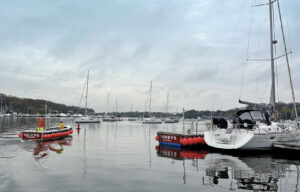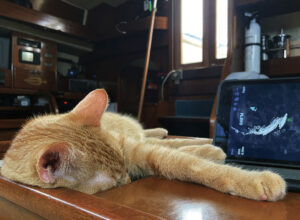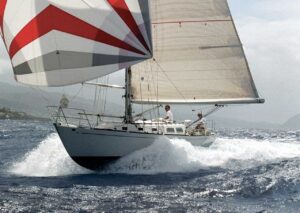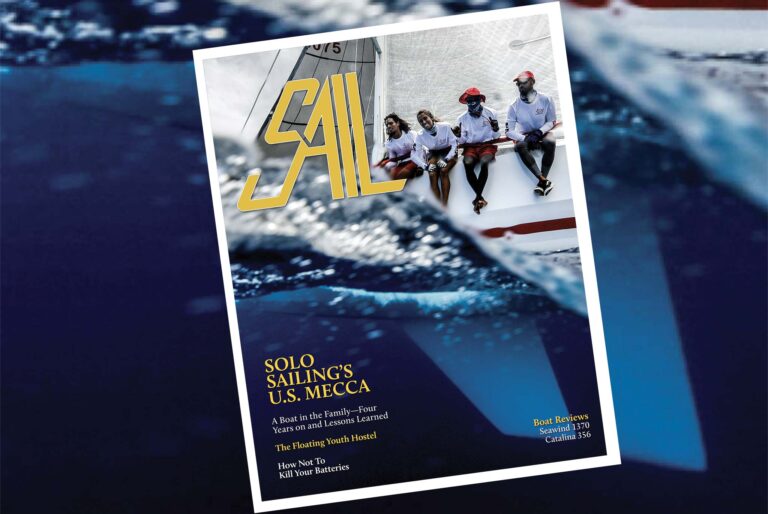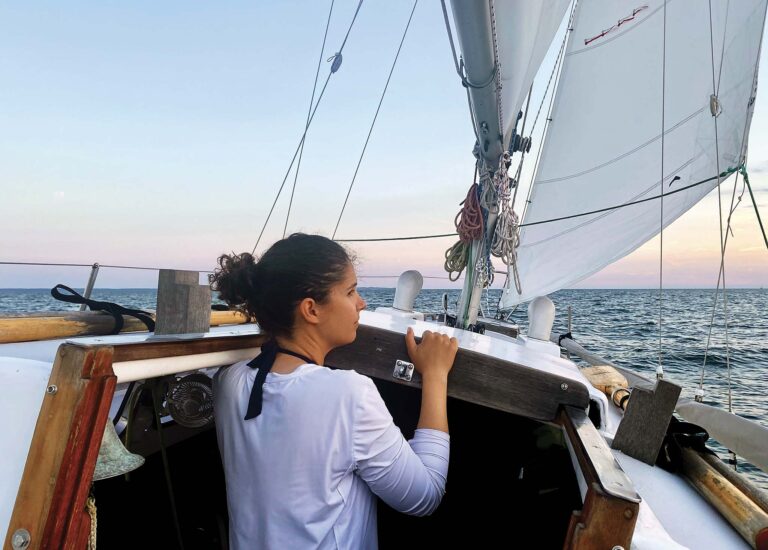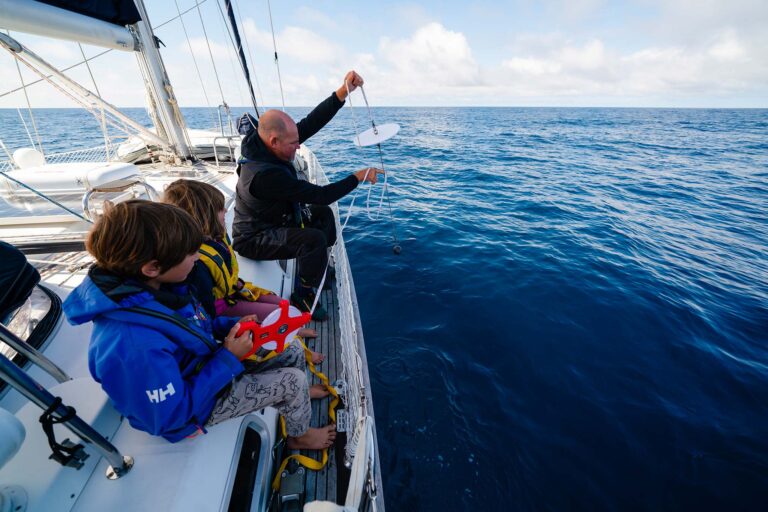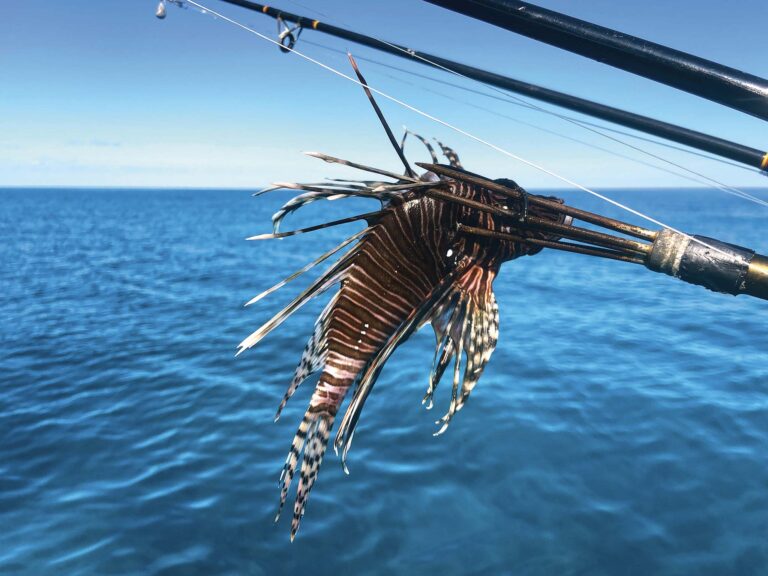
From the moment my father first put me in a sailboat he told me that safety and seamanship come first, above all else. He served in the Coast Guard in the North Atlantic during World War II and knew why these things are important. Later, when I went sailing with his wartime crew, every one of them put the same emphasis on seamanship and safety. They focused not on loading the boat down with fancy equipment, but rather on determining, in a practical way, what equipment would be effective in any situation that might occur and, most importantly, on how to use that equipment.
Of course, the number one piece of safety equipment on a sailboat is a lifejacket. Obviously, to be useful it must be worn. There are plenty of state and local rules mandating when a lifejacket must be worn, but both the Royal Ocean Racing Club in England and the Storm Trysail Club in this country agree that you should always wear your lifejacket when wearing foul weather gear or sea boots, when the boat is reefed, when there is fog, when it is dark or when the water is cold. Your lifejacket must be able to keep you afloat when you are wearing gear that would otherwise sink you and when it may be difficult and take time for your boat to get back to you.
Although there are many different styles of lifejacket, I prefer an inflatable harness, such as a Mustang or Spinlock. The Spinlock isn’t cheap, but it is nice because it doesn’t weigh heavily around your neck. When used with a good tether, both these units are effective and safe.Another possibility is a dinghy-type vest with a Lirakis–style harness. This combination can be a bit cumbersome to put on unless you use some shockcord or tape to secure the harness to the lifejacket and create one unit.
I also like a flat dinghy-style lifejacket that rides down low enough on my back to cover the ribs and kidneys. Because it acts a bit like a flak jacket, it was a great help to me when I returned to racing after having broken several ribs.
A strobe light is essential and can be easily attached to the shoulder strap of a dinghy-style jacket. Never tie it around an inflatable lifejacket, however, because the strobe’s lanyard could rupture the bladder when the jacket is inflated. Instead, stow or secure the strobe inside the jacket or keep it on a lanyard in a pocket or fanny pack. Make sure the lanyard is long enough that you can hold the strobe up high enough to be seen, and also carry a whistle on a lanyard.

Jacklines
Jacklines should be secured a few feet forward of the quarters, and run to a centerline cleat or padeye about 4 feet abaft the bow. With a 6ft harness tether, this makes it harder to actually fall off the bow or stern. Many racing crews run jacklines outside the shrouds to keep them clear of the jib cars. If your deck layout permits it, running them inside the shrouds is better, again because it will make it harder to fall entirely overboard.
Jacklines should be rigged taut and should be made of heavy Dacron (polyester) or Spectra webbing. While a round piece of line is easier to hook into, it can roll under your feet and cause a fall. Twisting a webbing jackline so it forms a spiral along its length keeps it from lying flat on deck and makes it easier to pick up. In addition to the jacklines, large padeyes with strong loops made of webbing or rope should be located in the cockpit near the companionway and helm.
Whenever anyone relieves himself off the stern, the risk of going overboard increases exponentially. If conditions are windy, or you are alone on deck, kneel on the deck and go under the lifelines or stern pulpit. Better yet, stay in the cockpit and use an old plastic bottle.
Another potentially dangerous moment is when you are going up, or coming down the companionway. It is surprisingly easy to lose your balance and suddenly get thrown to one side, or perhaps even overboard. If you are going below from the cockpit, the proper routine is as follows: keep your tether clipped to a padeye near the companionway, climb down the companionway steps, and then, once your feet are on the cabin sole, detach the tether from your harness and leave it hanging alongside the ladder. When it is time to go back on deck, re-attach the tether before you start to climb up the companionway. A nice side effect of leaving the tethers hooked on is that it is quieter below for the off watch because you are not dragging the tether through the boat’s interior.
When I started double-handed ocean racing my attention to safety issues improved dramatically. When we began practicing our man overboard procedure, one of us would throw a cushion in the water and then sit back and watch the other return to the cushion. We learned right away that one person cannot keep track of the MOB and handle the boat. It was so obvious that we got more religion; now both of us always wear a lifejacket and tether. Both of us also have a waterproof VHF in our lifejacket pocket so the helmsman on the boat can, hopefully, talk to the person in the water and make the pick up more quickly.
After one or two recoveries, we changed our routine and dropped the “keep your eye on the person in the water” part of the exercise. Now we luff up into a quick stop, hit the MOB button on the GPS, reduce sail, and return to the MOB point using the GPS. Reducing sail means rolling up the jib (if it’s on a furler) or dropping it if it’s hanked on.If you are flying a spinnaker, pull the sock down and secure it. I don’t think it is smart, on either a double-handed racing boat or on a cruising boat, to have a racing headfoil, because there is a chance the dropped jib could go overboard.
MOB retrieval
You also need a way to get the person in the water back aboard. We permanently rig a line that droops down along the back of the transom from one stern cleat to the other about a foot off the water. This makes an easy handhold for the person in the water to grab hold of.
We also have a harness tether secured around the backstay chainplate and coiled up, ready to lower down to a person in the water, who can then clip it on to his harness and secure himself to the boat. It may not be very comfortable, but it guarantees that the man overboard stays next to the boat.
To get the person back aboard, our routine is to clip a short sheet—an old genoa sheet cut short with a snap shackle on one end—to the harness of the person in the water. We then run the line up over the stern to the biggest cockpit winch that’s available and start cranking. It’s not pretty, but it works.

Rig safety
Whether caused by a helmsman who loses concentration or an autopilot that can’t handle a wave, an accidental gybe can seriously injure crew and may damage the rig. That’s why I always rig double preventers on the boom. On our 37-footer, I use a piece of 1/2in diameter three-strand nylon anchor line about two and a half times the boat’s overall length. I put a clove hitch in the middle of the line around the boom and locate it just aft of the rigid vang because that is where the boom is reinforced. Then I lead the two ends of the line forward through snatch blocks mounted on port and starboard padeyes on the deck just forward and outboard of the shrouds, but inboard of the lifelines. This location is important.
After the lines have been run through the snatch blocks, they are led aft either to a cockpit or cabintop winch. This allows the leeward preventer to be pulled tight to hold the boom out. And if the mainsail gybes accidentally, the nylon will stretch and allow the boom to swing slowly toward the centerline of the boat—without any shock loading or crew injury. Because the snatch blocks are inside the lifeline, the preventer will not bend the stanchions when the boom swings in.

When the boat is gybed intentionally, the preventer is released on the leeward side and the other one is trimmed in as the boom comes across. This preventer rig can also hold the boom in place in light air or a sloppy sea and if it’s a racing sprit boat, when the crew heels the boat to windward.
Certainly one of the riskiest operations at sea is going up the mast either to inspect or repair the rig or to unwrap a spinnaker. Underway I always inspect the rig with binoculars at least once a day and usually more often. Binoculars let you make a fairly detailed inspection with no risk. If you properly prepare the rig before the trip, there should be no need to go aloft. But if for some reason you must go up the mast, send the most experienced and fit crew, hopefully, one who is not too heavy. It is easy to get hurt, particularly if there is any kind of seaway, which is why I make it mandatory to wear a helmet—hockey, football or anything that will protect your skull and the perimeter of your face. And always fasten the chinstrap! Wearing a dinghy vest will help protect your body when you are aloft. Low-cut dinghy boots will help protect your feet. Secure the bosun’s chair, or even better, a mountain climbing web harness that circles each leg and your waist, to the halyard. Always secure the harness with a bowline and use the halyard shackle as the backup connection. Attach a downhaul line to the halyard to keep the person from swinging excessively in a breeze.
Going to sea is an adventure I always look forward to. For me, half the fun is the preparation and practice that I do before setting out. The other half is making the passage with good friends on board. If you plan everything so you always sail safely, you will have a great time no matter what kind of weather you might experience.
Rich du Moulin has raced in everything from the Fastnet to the Transpac and won the Bermuda double-handed class four times. He is the founder of Storm Trysail Club’s junior safety at sea program
Photos by Andrew Sims
Illustrations by Jan Adkins

